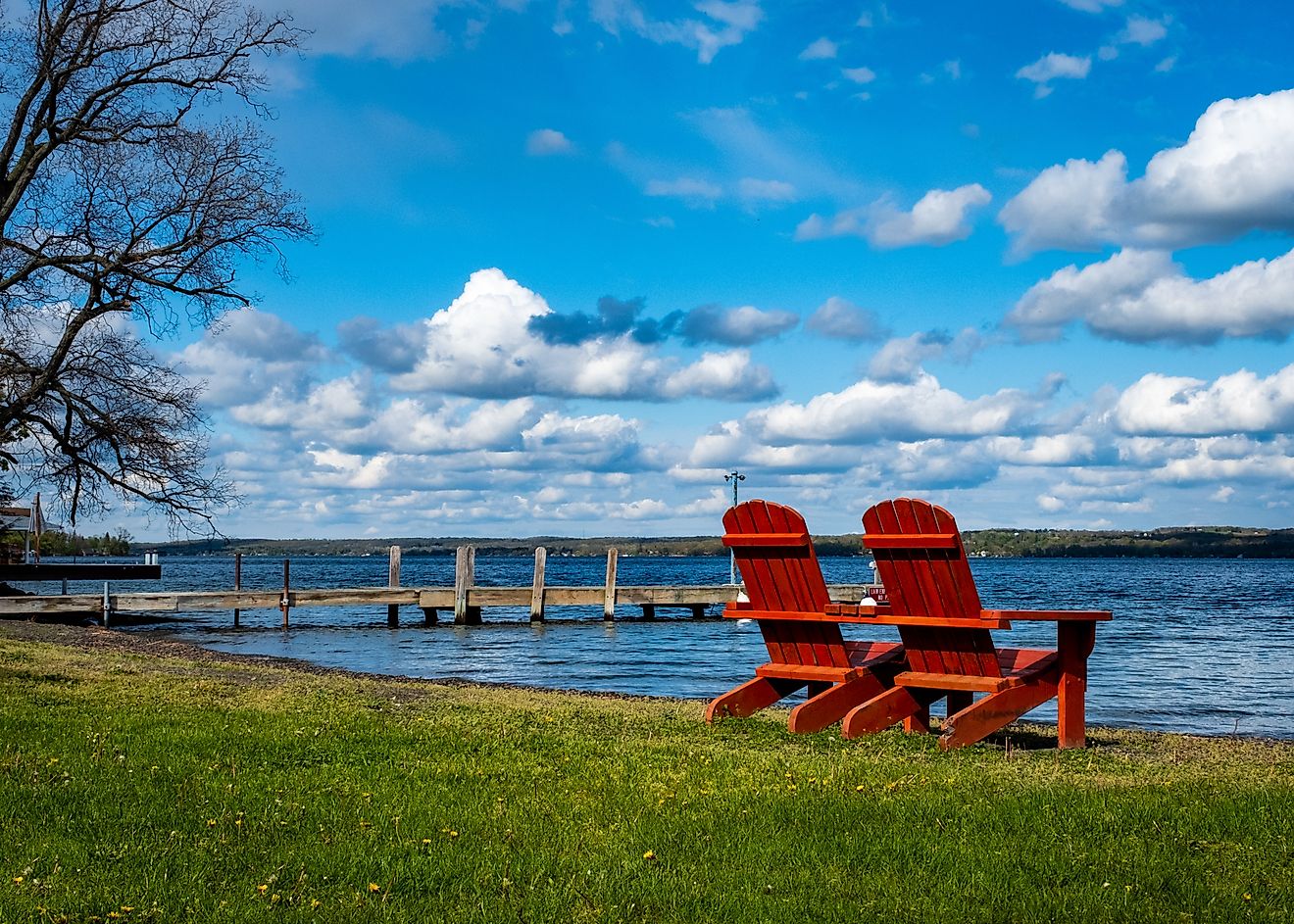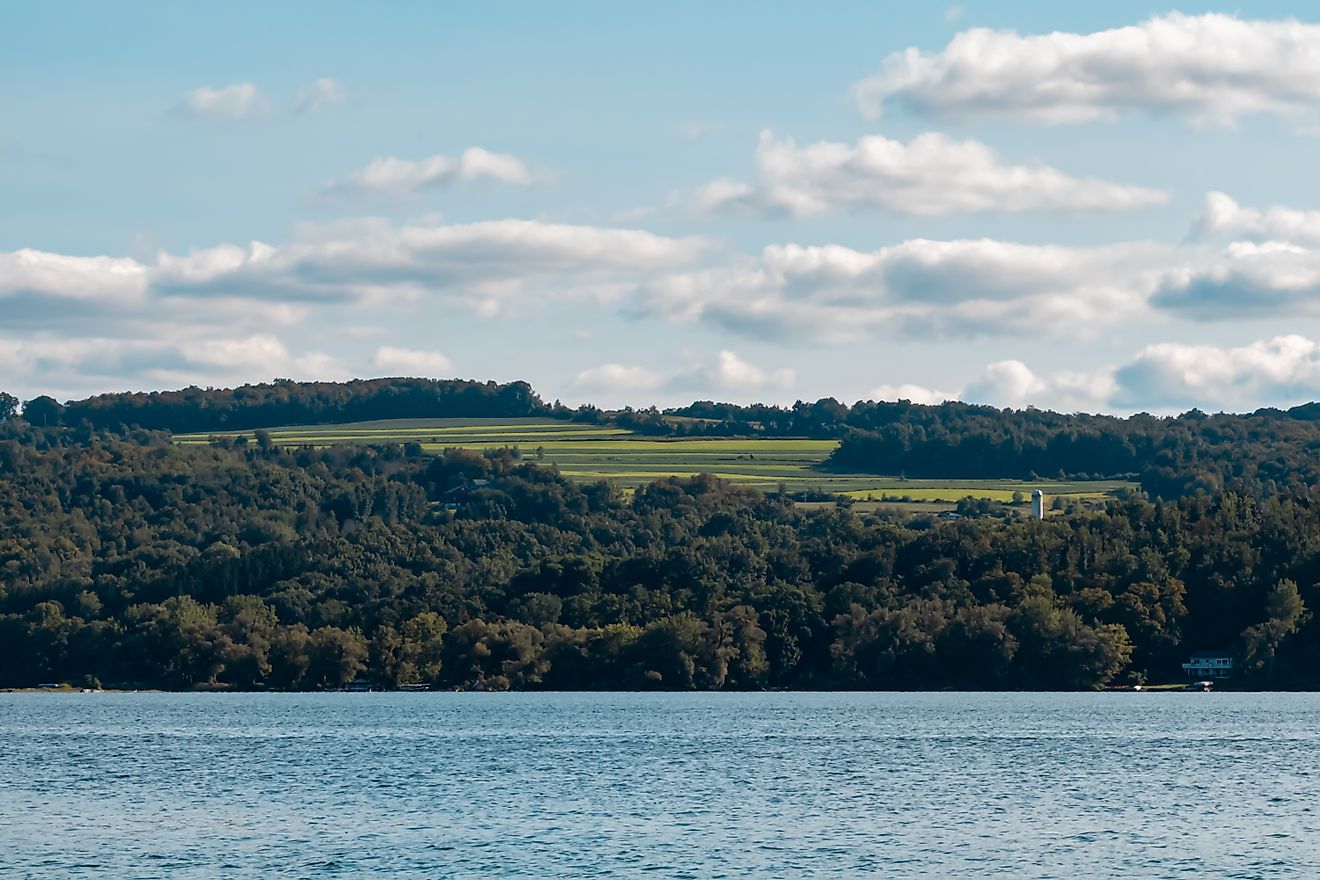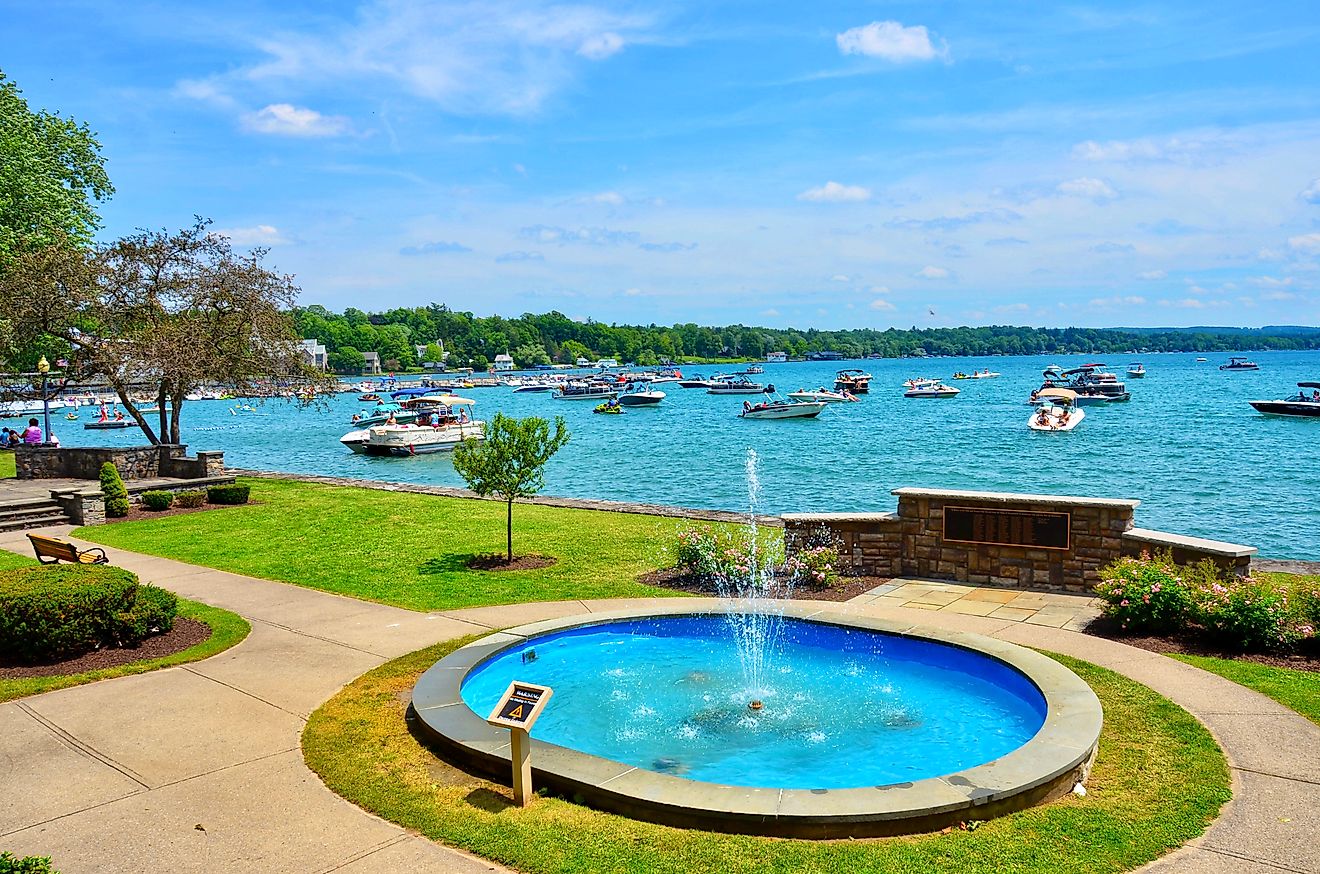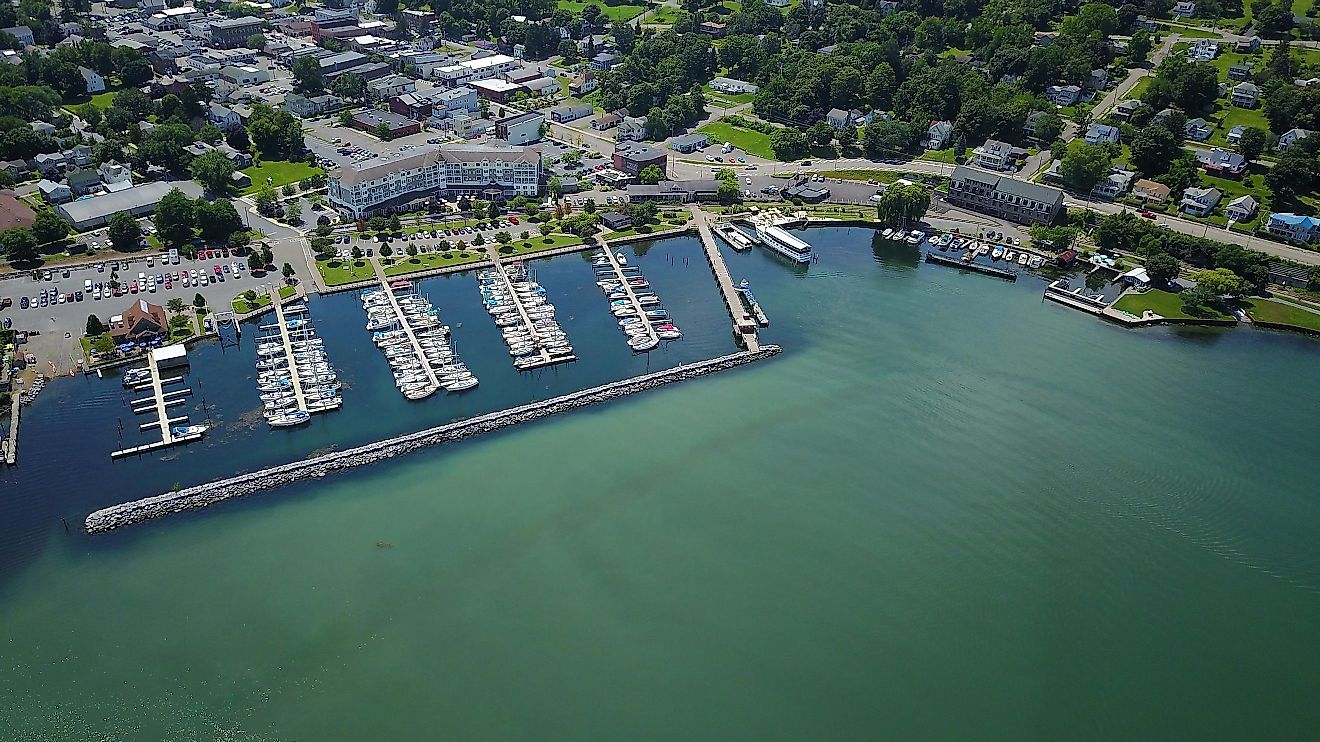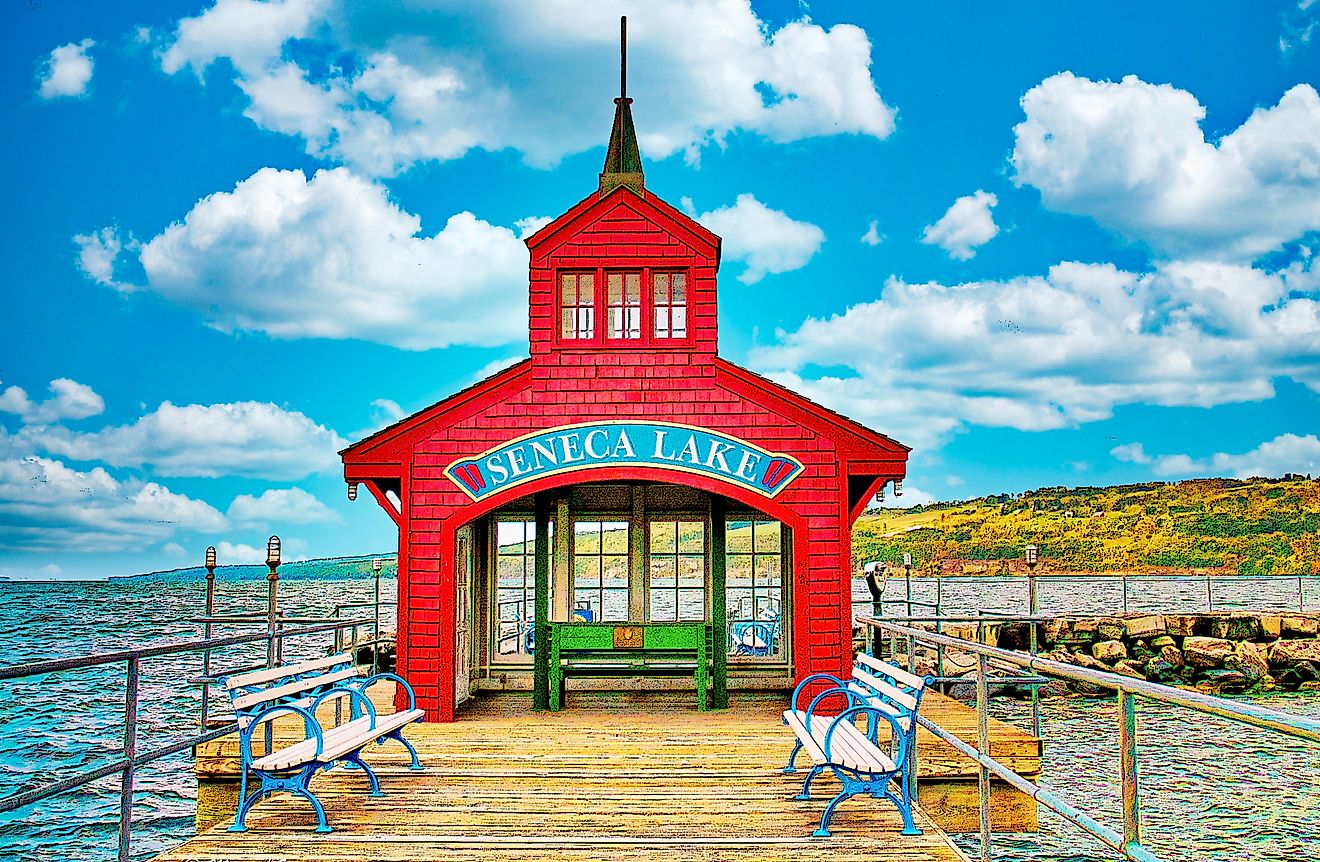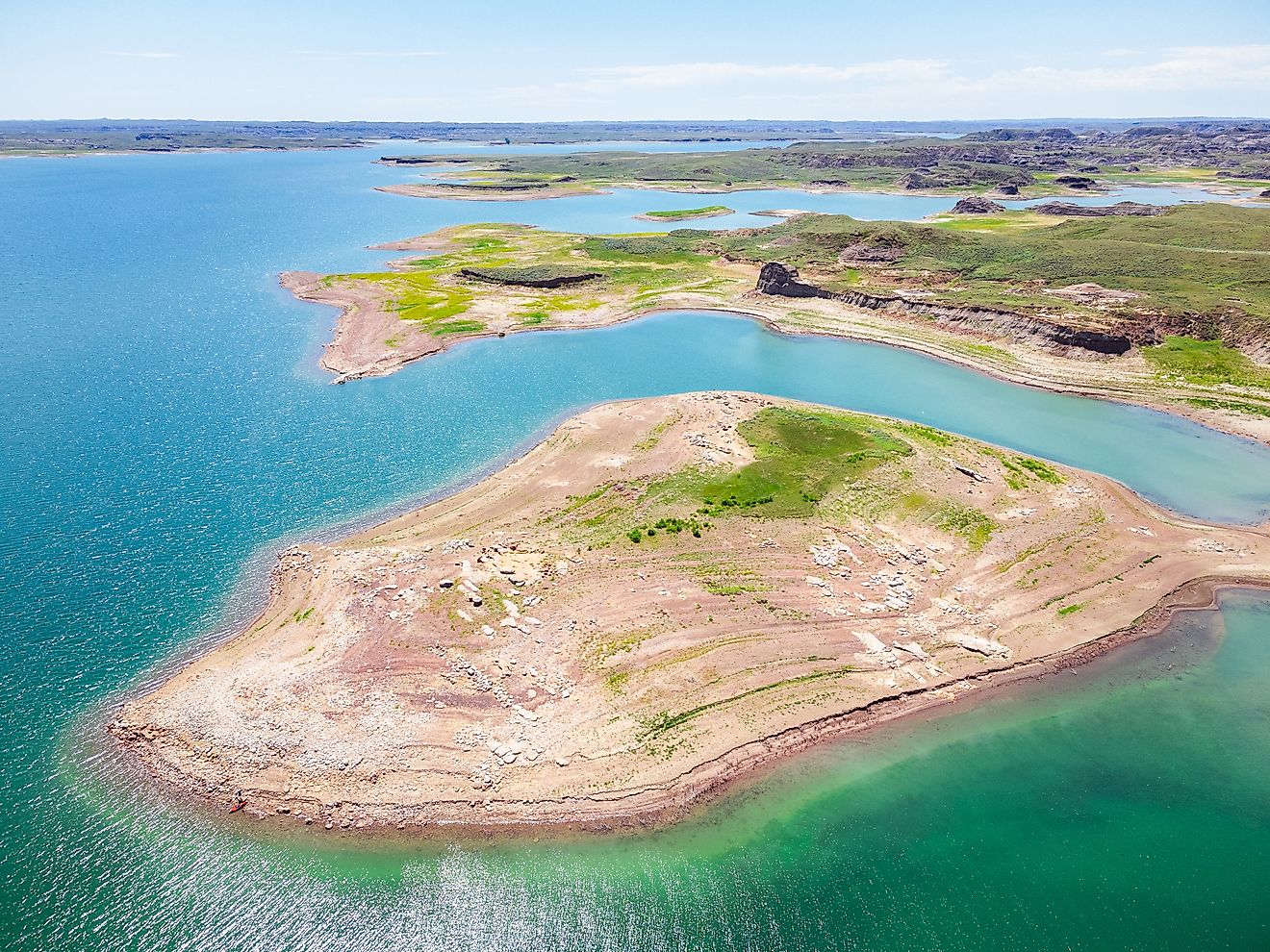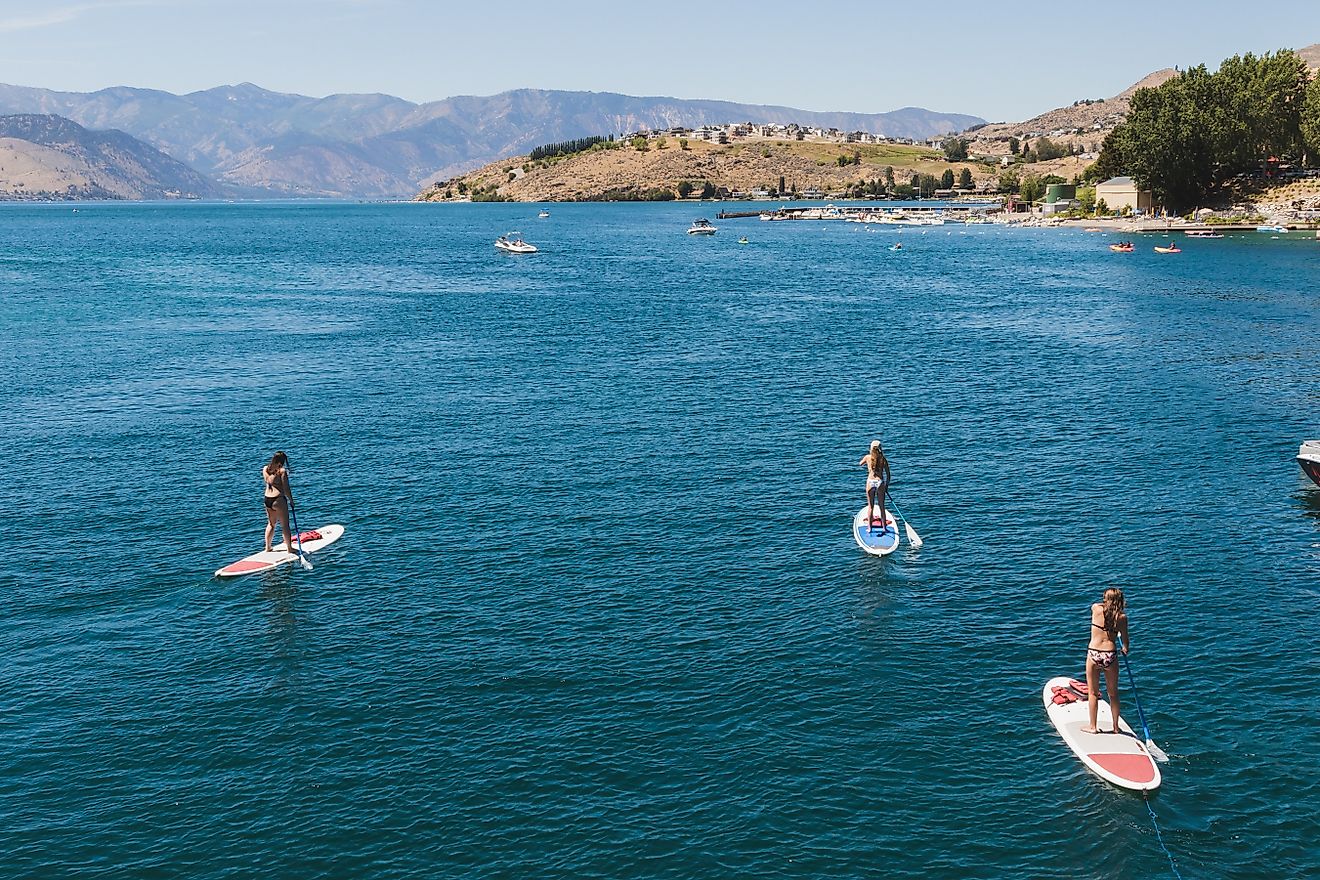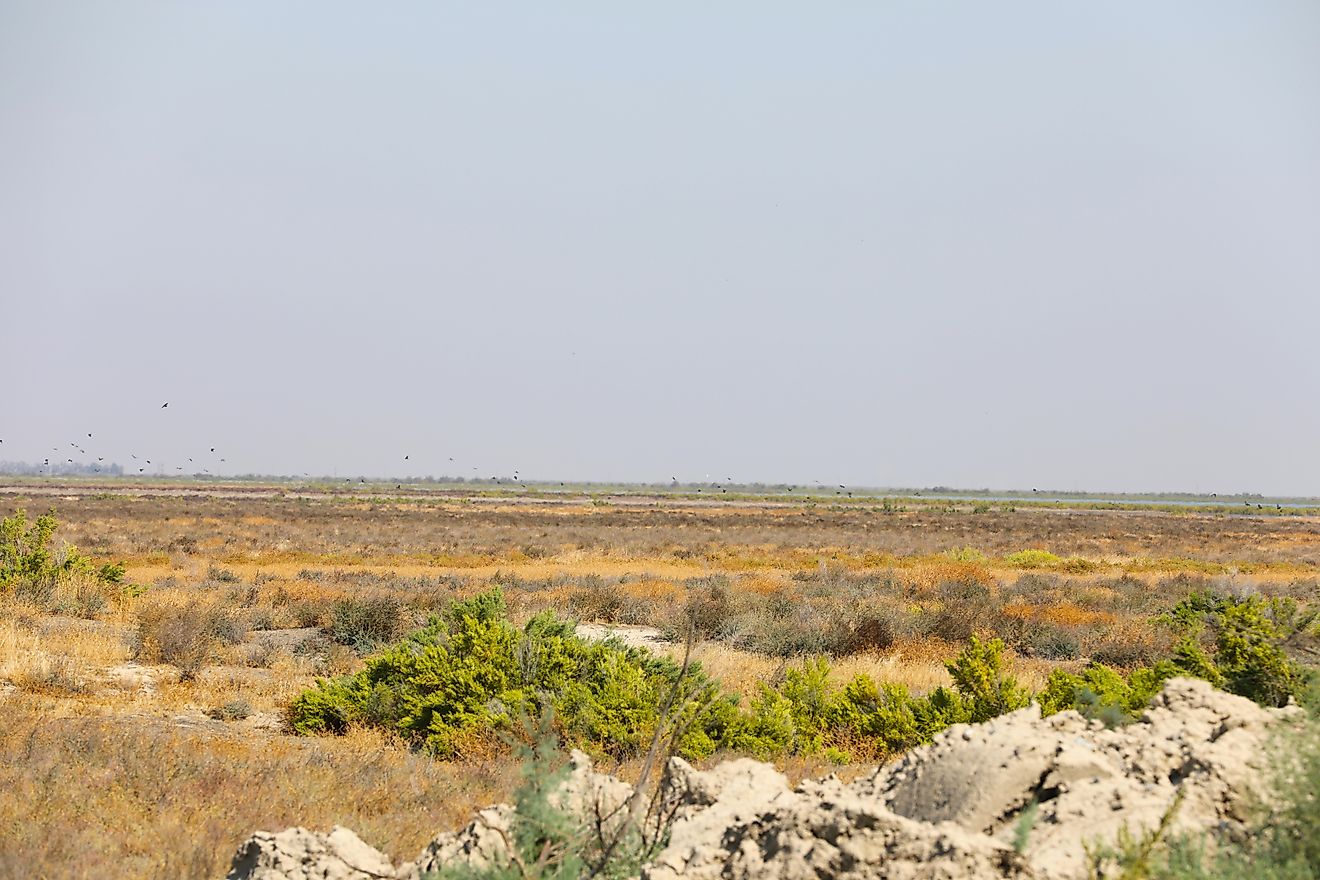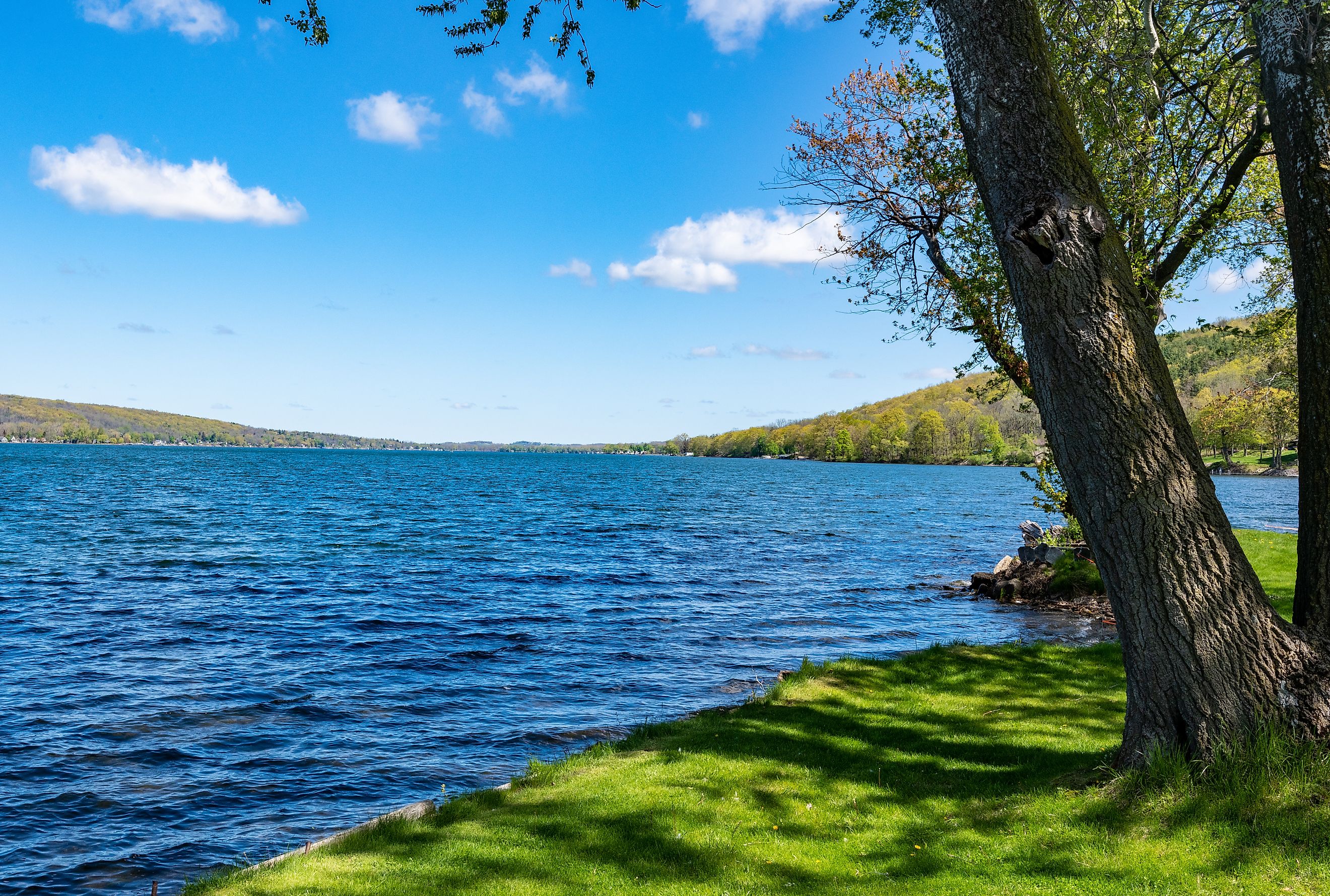
Honeoye Lake
Tucked into the western edge of the Finger Lakes region, Honeoye Lake offers a unique blend of natural beauty, outdoor recreation, and historical significance. Although it ranks 10th in size among the 11 Finger Lakes, Honeoye stands out for its warm, shallow waters, thriving fishery, and close proximity to Rochester—just 28 miles south.
The lake stretches 4.5 miles in length and spans 1,772 acres, with a maximum width of 0.8 miles. At just 30 feet deep, Honeoye Lake stays warmer than many of its sister lakes, making it a summer favorite for swimmers, anglers, and boaters.
Geography and Physical Features
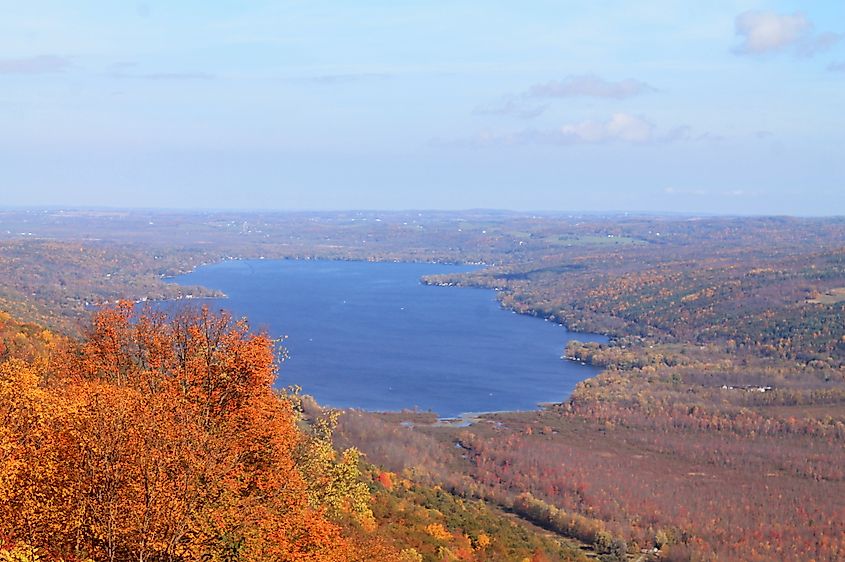
Honeoye Lake as viewed from the Harriet Hollister Spencer State Recreation Area. Editorial credit: Andy Arthur via Wikimedia Commons
Situated in southwestern Ontario County within the Town of Richmond, Honeoye Lake sits at an elevation of 804 feet. Shaped like a long, narrow teardrop, the lake offers a cozy and accessible escape into nature, especially for visitors from nearby cities. While not as deep or expansive as Canandaigua or Seneca, Honeoye compensates with inviting shorelines and scenic views that change dramatically with the seasons.
A Lake Steeped in History
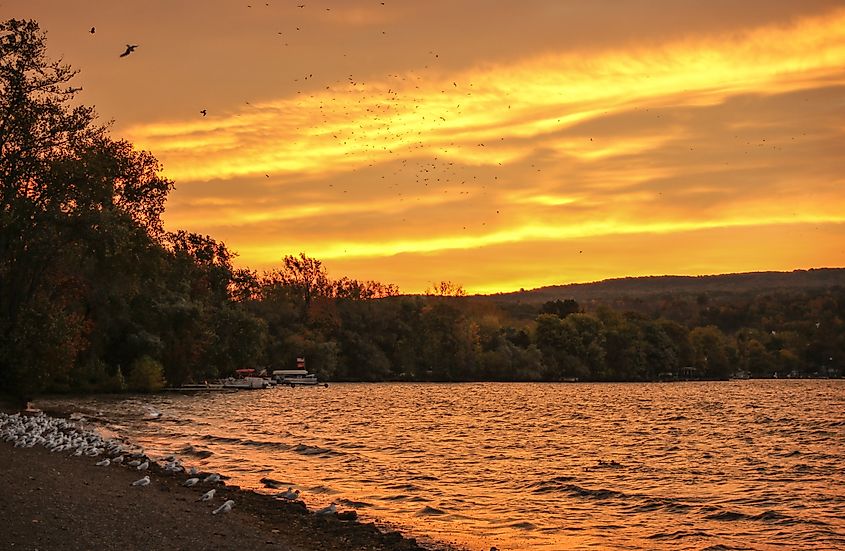
Long before modern recreation took hold, Indigenous people called this land home. Thousands of years ago, Point Peninsula Indians settled in the Honeoye Valley. Later, the Seneca Nation, part of the Iroquois Confederacy, inhabited the area and lived in harmony with the land and lake.
During the American Revolution, tensions between American settlers and the Seneca reached a boiling point. Allied with the British, the Seneca resisted American expansion, prompting General George Washington to order the destruction of their villages. Fort Cummings, a small garrison, rose along the lake’s edge as part of a campaign to drive the Seneca from the frontier.
Following the war, American soldiers returned to the area, drawn by its fertile soil and scenic beauty. By the mid-19th century, progressive ideals took root in the region. Abolitionists, feminists, and Underground Railroad conductors turned western New York into a hub for social reform. Historic routes and safe houses helped shepherd escaped slaves toward freedom in Canada.
The Rise of a Resort Destination
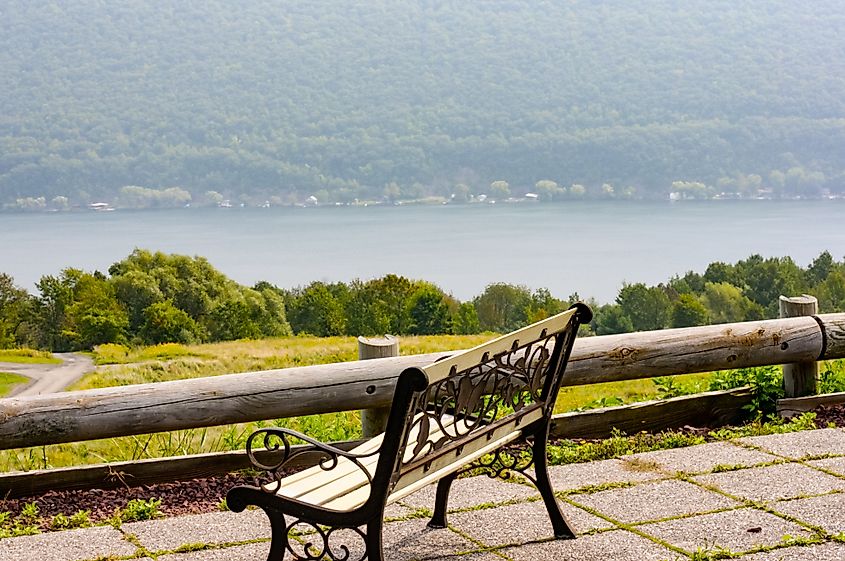
At the start of the 20th century, Honeoye Lake began to attract attention from wealthy residents of Rochester. Its warm, shallow waters and pleasant breezes made it ideal for summer retreats. Victorian-era cottages sprang up along the shoreline, some of which remain today as reminders of the lake’s resort-town heritage. Boats and bicycles replaced oxen and plows as the lake slowly transitioned from an agricultural stronghold to a seasonal haven for recreation.
Today, the lake still exudes a charming mix of rustic serenity and seasonal energy. Local events, from fishing derbies to craft fairs, breathe life into the community during warmer months. Fall brings vibrant foliage that frames the lake in shades of crimson and gold. Winter ushers in snowmobilers and ice fishers. Each season paints Honeoye Lake in a new light.
Fishing at Honeoye Lake
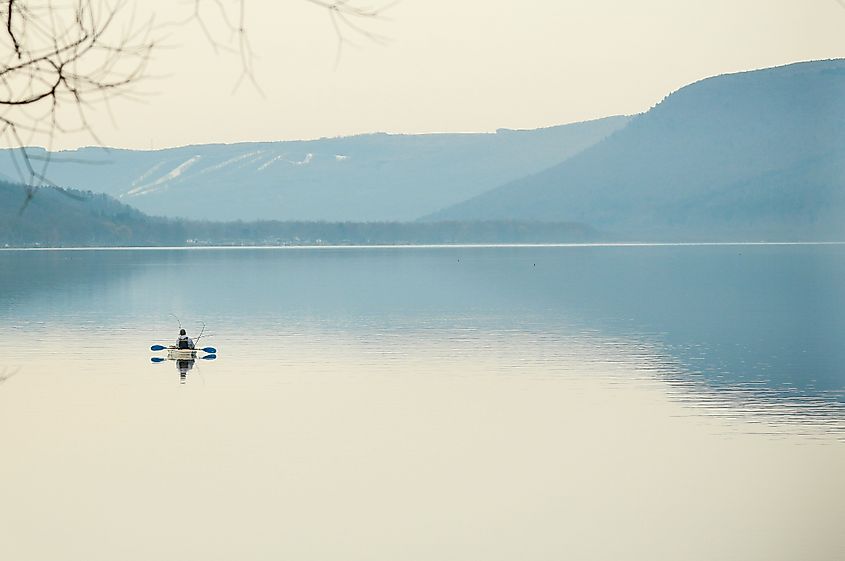
Anglers travel from across the state to fish Honeoye’s well-stocked waters. The lake supports a wide range of species, including black crappie, bluegill, chain pickerel, largemouth bass, pumpkinseed, smallmouth bass, walleye, and yellow perch. While all sportfish enjoy natural reproduction here, the New York State Department of Environmental Conservation (DEC) bolsters walleye numbers by stocking over 33,000 fingerlings every other year.
DEC’s modern fishery management practices—like enforcing seasons, bag limits, and size restrictions—have helped maintain a strong predator base. Largemouth bass, smallmouth bass, and chain pickerel keep the panfish population in check, balancing the ecosystem. Officials also continue to monitor the impact of alewives, an invasive species that recently arrived in the lake.
Through its Big Panfish Initiative (BPI), the DEC identified Honeoye as a premier destination for larger-sized bluegill, pumpkinseed, yellow perch, and black crappie. Anglers who participate in the ongoing Angler Diary Cooperator Program help the DEC track population trends and evaluate the success of these initiatives. Anyone interested in contributing to the program can contact the DEC Region 8 Office.
Ice Fishing: A Winter Tradition
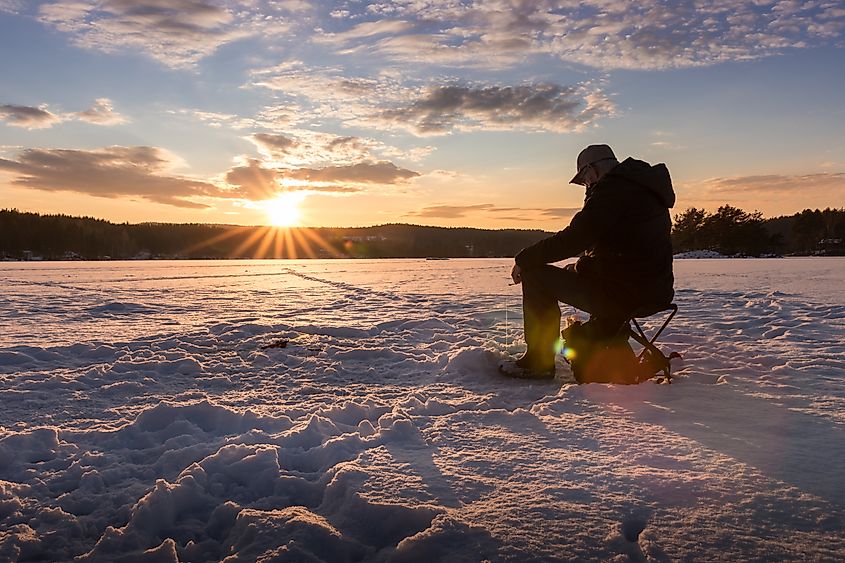
As winter sets in, Honeoye Lake freezes solid, drawing ice fishing enthusiasts from around the region. The lake’s shallow depth allows it to freeze earlier than deeper lakes, creating a reliable ice cover for anglers eager to target perch, walleye, and crappie. Local guides and seasoned fishers often recommend the southern end of the lake for the best ice fishing action. Warm tents, drilled holes, and the clink of bait buckets turn the frozen surface into a lively fishing village.
Boat Launches and Public Access Points
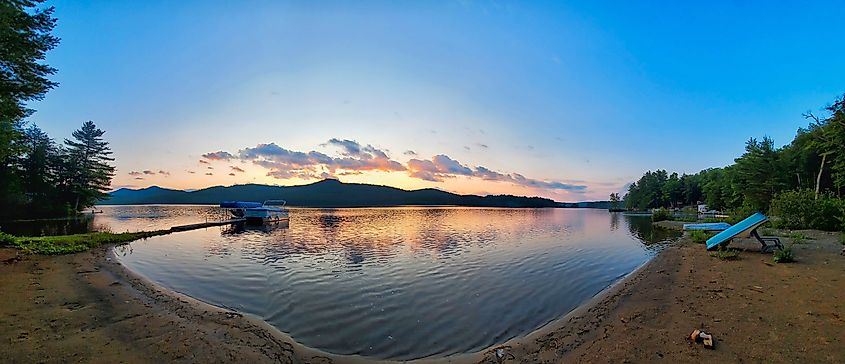
Visitors can access Honeoye Lake from two public launch sites. On the southeastern end of the lake, the Honeoye Lake Public Boat Launch accommodates up to 30 vehicles with trailers. Located off East Lake Road, this site remains open year-round and offers winter maintenance to support ice fishing.
At the northwestern corner, Sandy Bottom Beach provides access for smaller boats, canoes, and kayaks. Launching from Sandy Bottom Road, boaters will find limited lakeside parking for six vehicles, along with overflow parking near the local baseball diamond. The Town of Richmond manages this site and maintains it throughout winter for continued fishing access.
These convenient launch points make it easy for recreational boaters and anglers to enjoy the lake in every season.
Planning a Visit to Honeoye Lake
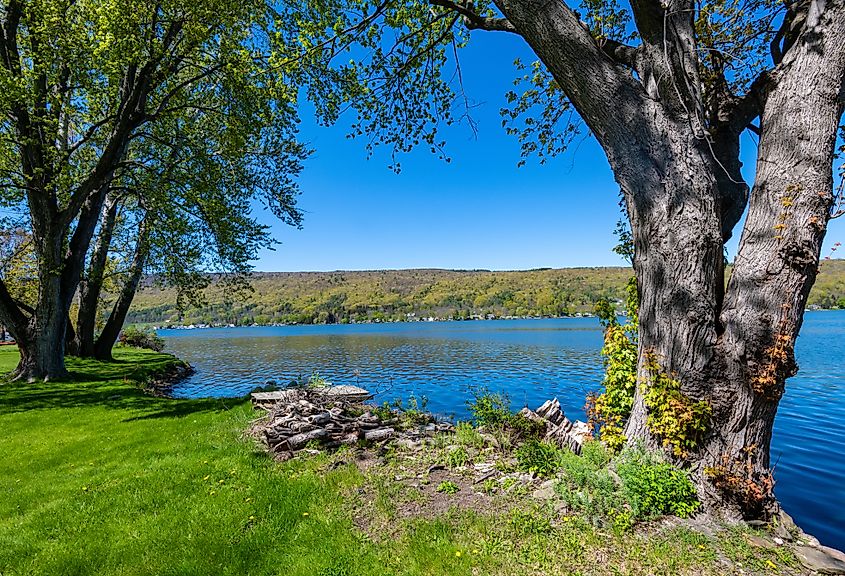
Honeoye Lake welcomes visitors year-round, but summer draws the biggest crowds. Boaters can cruise the calm waters or anchor near the shoreline to swim. Paddlers glide across glassy surfaces in the early morning, while anglers cast lines from dawn until dusk.
Families often spend the day at Sandy Bottom Park, where sandy beaches, picnic areas, and playgrounds create a laid-back setting for all ages. Cyclists can explore country roads that wind through fields and rolling hills. In the evening, sunset over the lake provides a spectacular show of color and reflection.
Local shops and restaurants in the hamlet of Honeoye round out the experience. Whether you're stopping for a bite at a lakeside grill or browsing a farmers market, the small-town charm leaves a lasting impression.
Ecological Challenges and Conservation
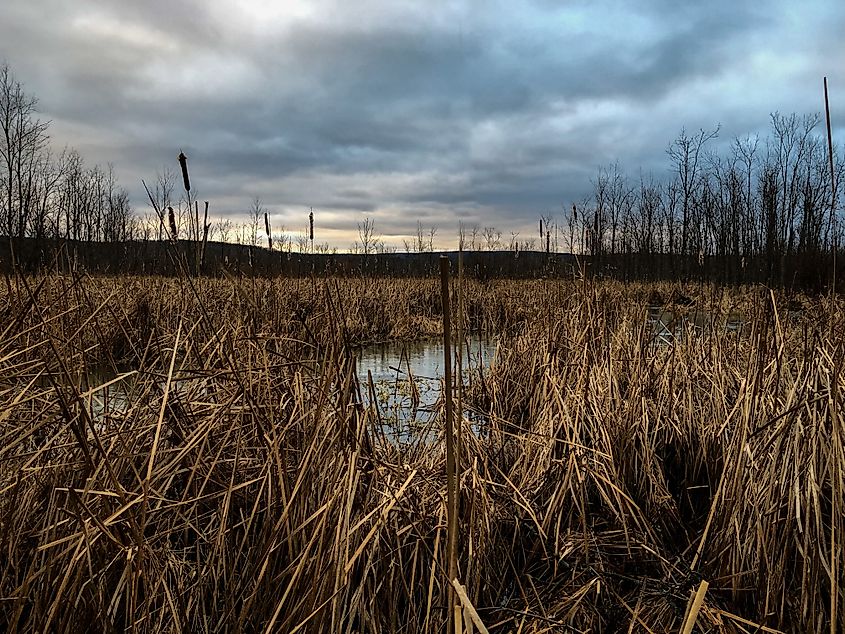
While the lake continues to thrive, it faces the same pressures seen across the Finger Lakes region. Invasive aquatic plants like Eurasian milfoil threaten to choke native species. Runoff from surrounding farms and homes contributes to nutrient loading, which can lead to harmful algal blooms in hot summer months.
To combat these issues, local groups and environmental organizations partner with state agencies to promote sustainable practices. Shoreline residents often participate in educational workshops focused on eco-friendly landscaping and proper septic maintenance. These grassroots efforts help protect Honeoye Lake’s water quality and long-term viability.
DEC’s periodic surveys and fisheries programs aim to keep the lake’s ecosystem balanced. Maintaining a healthy ratio of predator and prey species remains a top priority, especially as new challenges like climate change alter seasonal patterns and lake chemistry.
